Artificial Intelligence (AI) has the potential to change content marketing by streamlining tasks and processes that traditionally take a lot of time and energy.
And incorporating AI tools into your work is easier than you might expect.
By the time you’re done reading this article, you’ll understand exactly how you can start using AI throughout every phase of planning and executing your content strategy.
But let’s first go over why using AI is important in the first place.
The Benefits of an AI-Driven Content Strategy
Using AI when creating and launching your content strategy can help you save time and reduce costs.
Specifically, you can benefit by:
- Automating repetitive tasks and freeing up time for creative or strategic thinking
- Better meeting your audience’s needs by creating the types of content they’re looking for
- Avoiding creative burnout by using AI content generators for drafting
- Gathering insights from lots of data without having to manually sift through it
- Getting more out of your marketing budget by increasing your output without having to hire more creators
How to Use AI to Execute Your Content Strategy
Here are some ways to incorporate AI in your content strategy:
1. Speed Up Keyword Research
Using AI tools for keyword research lets you quickly find relevant terms that can help your website gain visibility in search results.
Use the Keyword Magic Tool to find relevant ideas.
Enter a term related to your website.
Then, enter your homepage URL in the purple box labeled “AI-powered feature,” select your target location, and click “Search.”
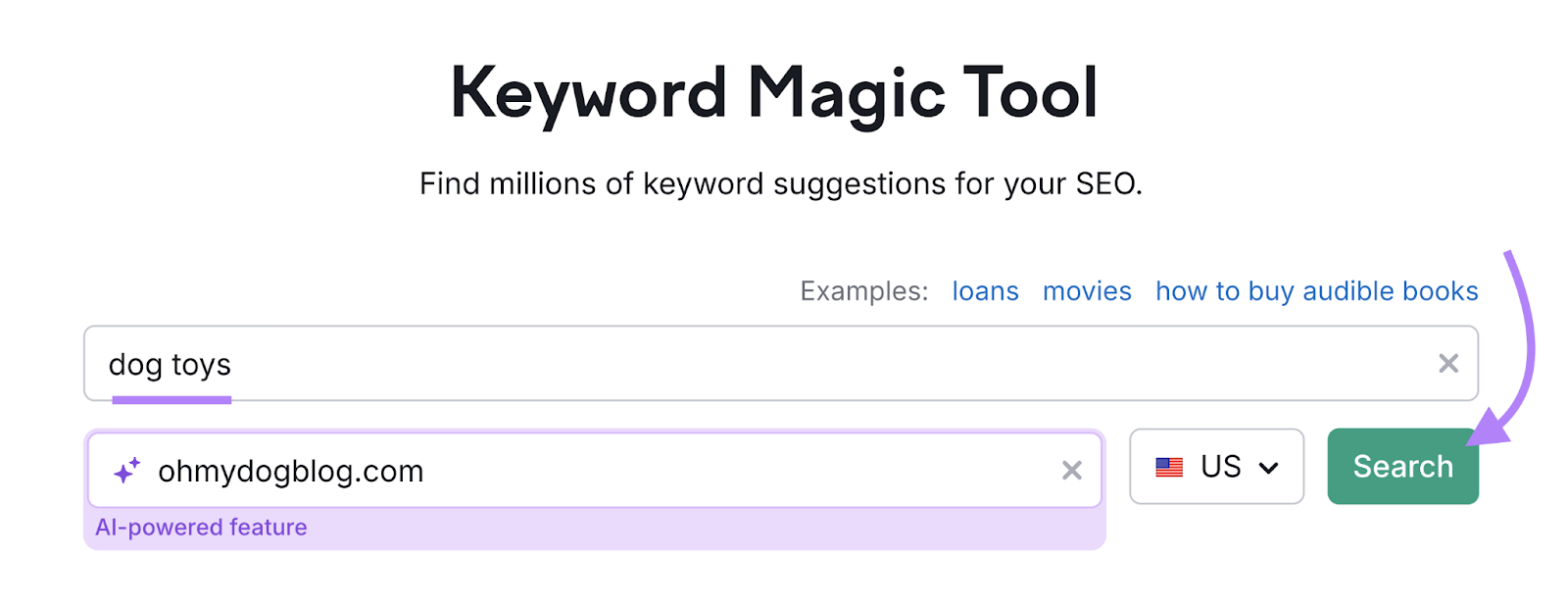
The tool will provide a list of relevant topics and their metrics.
To find ones you have the best chance of ranking for, use the Personal Keyword Difficulty (Personal KD %) filter to set a custom range from 0-49 to narrow the list to topics that your specific website can most easily appear for in search engines.
Then click, “Apply.”
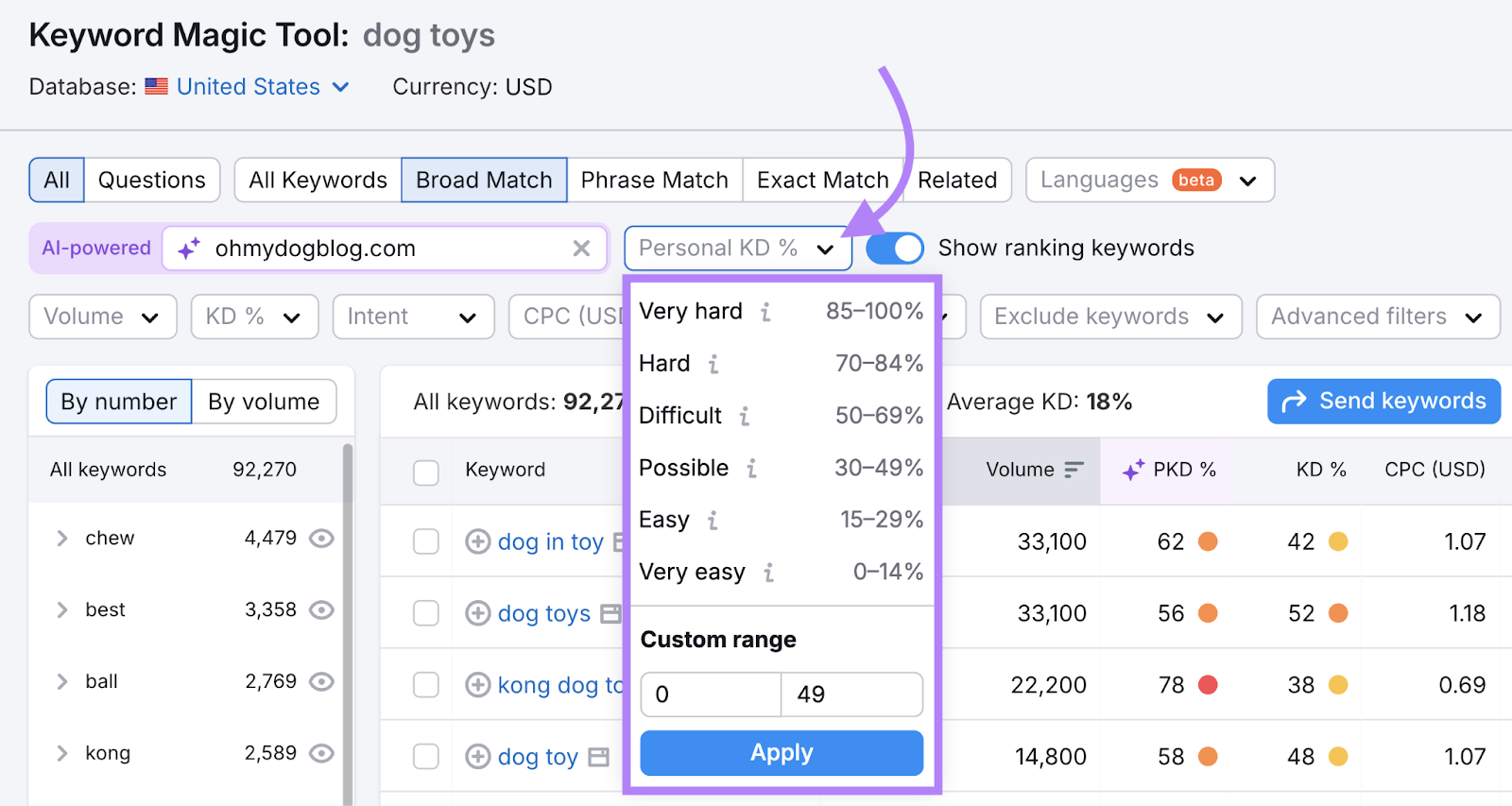
Look at the resulting list and prioritize the ones with the highest search volume (e.g., the average number of monthly searches) that are relevant to your business. The more people who search for the topic, the better.
Add those topics to your content plans. Then, use the search intent (Intent) column to inform what type of content you’ll create.
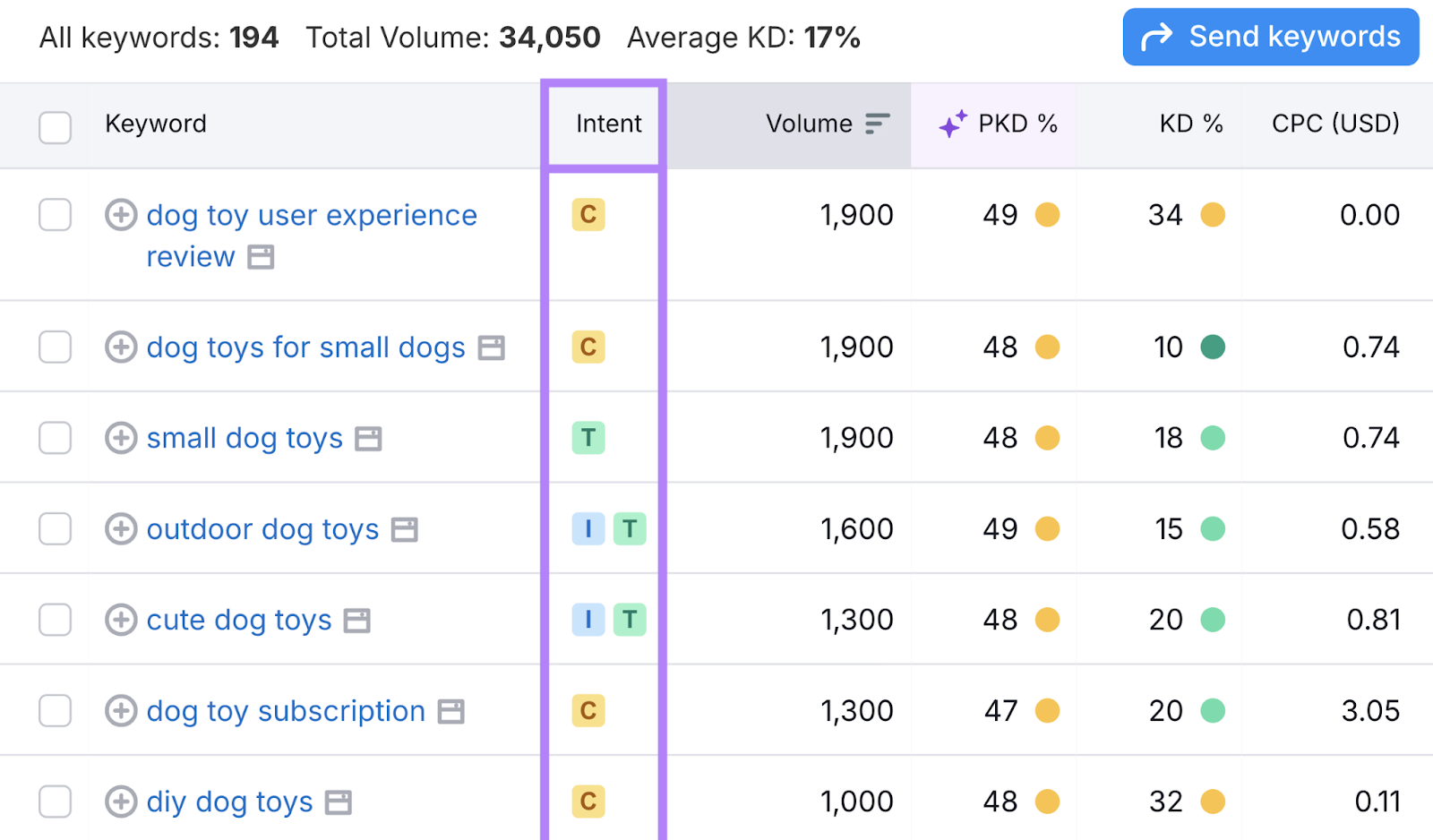
Intent refers to what the user wants to accomplish by searching. It can be transactional (interested in taking action), informational (looking to learn about something), navigational (trying to find a page or site), or commercial (interested in comparing options to inform a decision).
You want your content to meet search intent. So your audience is more likely to find it valuable.
In addition to considering the type of intent, it’s a good idea to look at the content that’s already ranking (appearing in search engines) for those terms. Which helps you better understand what it is users are looking for.
2. Tailor Your Content to Your Audience
Certain AI tools make it easier to hone in on your target audience, which makes it easier to create content that’s likely to resonate with them.
For example, the AI Marketing Strategy App lets you enter your business information to get tailored recommendations based on your business data and sales goals.
Start by creating a funnel. You’ll be prompted to add your business details to inform the AI. Make sure to include files, recordings, or other data to help improve the recommendations.
Then, click “Generate.”
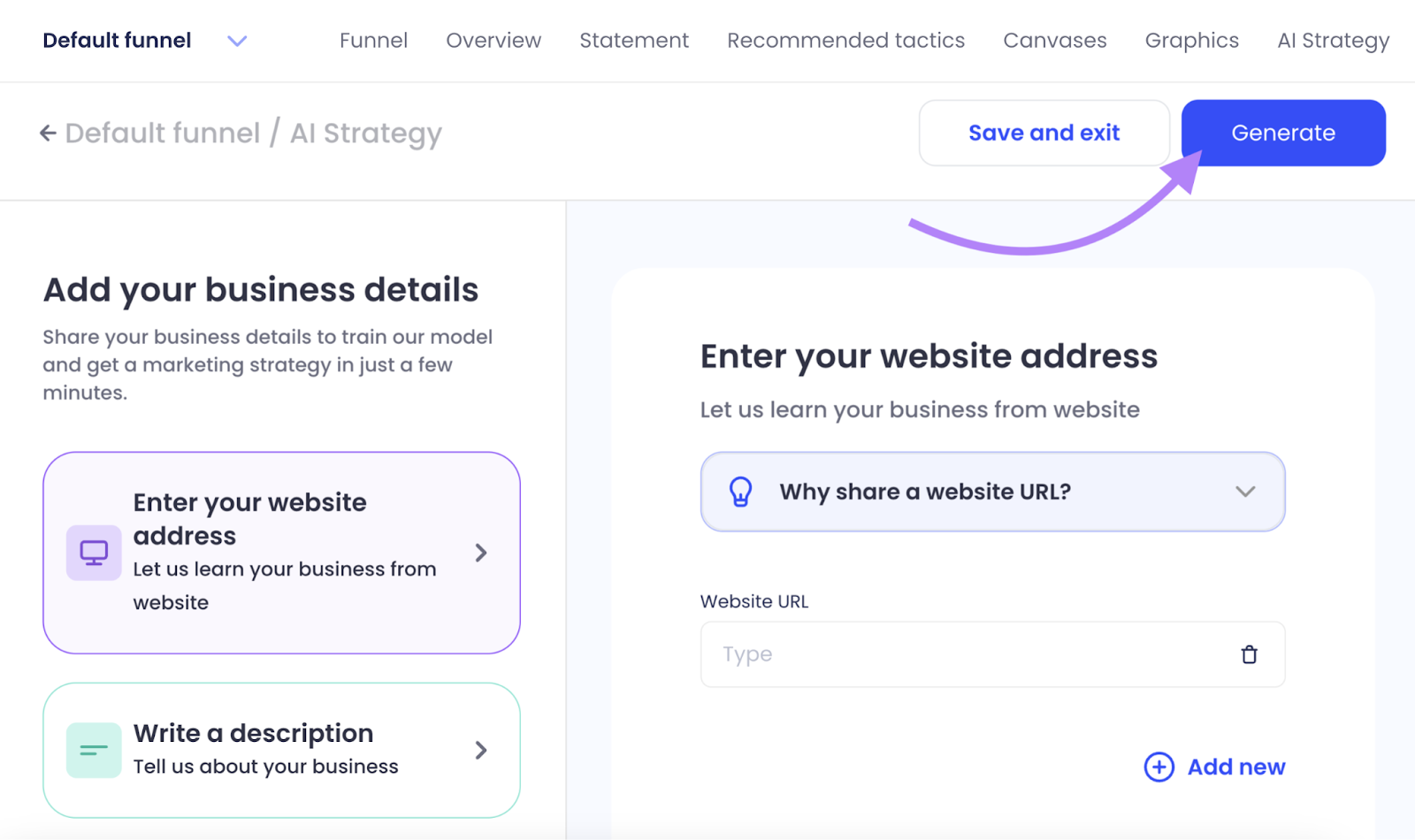
You’ll be taken to the “AI Strategy” tab, where your strategy will load in six categories.
Click on the “Target Audience” section (once it’s populated) to study the main audiences the tool suggests.
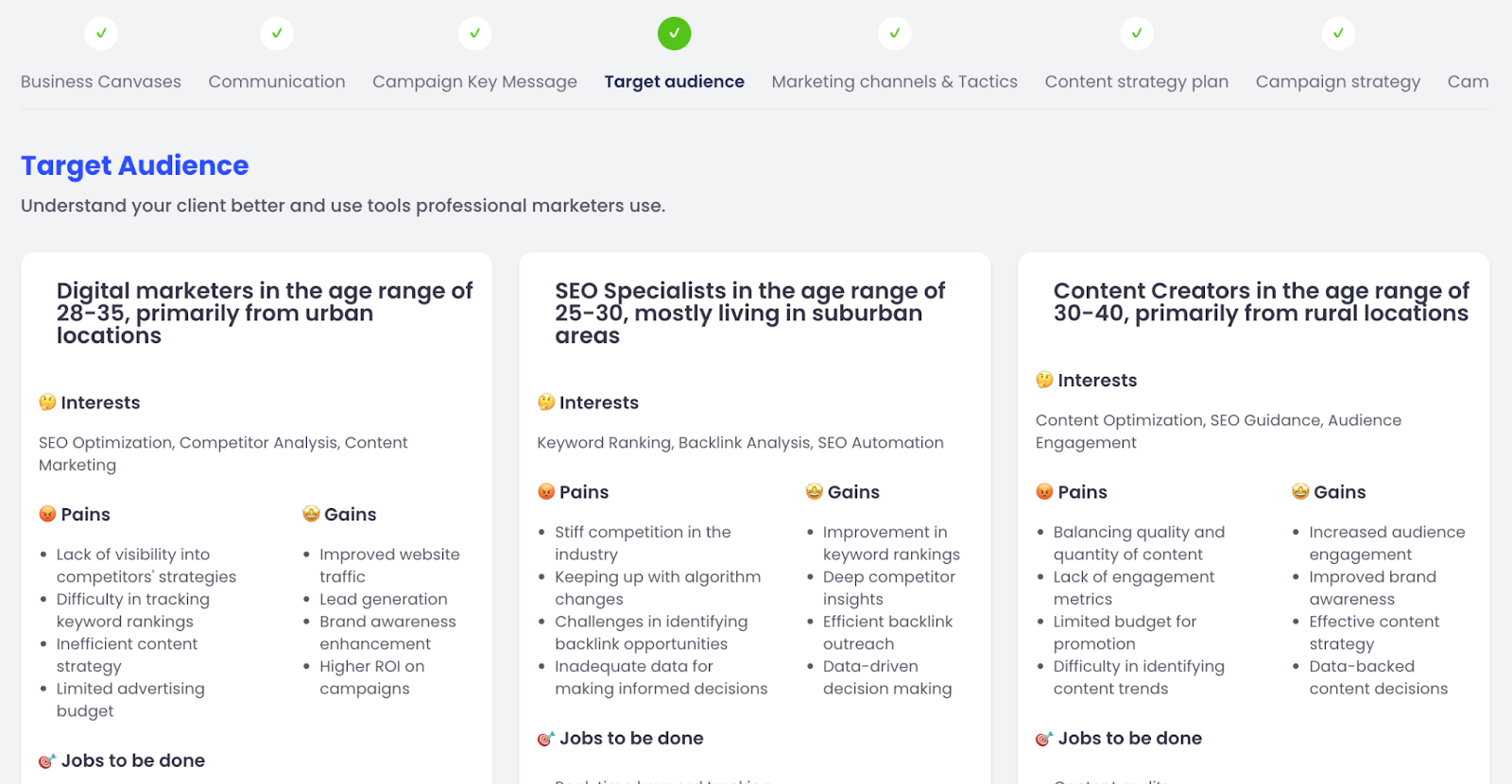
Then, go to the “Marketing channels & Tactics” and the “Content strategy plan” sections to study what kind of content you should create and where to share it to reach those audiences.
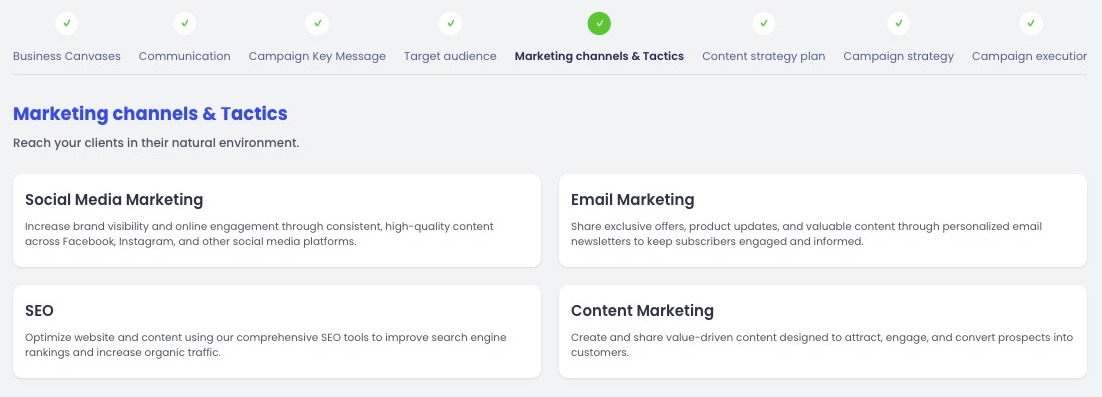
3. Create Detailed Content Briefs
AI-generated content briefs show your writers how to create high-quality content that aligns with your audience’s intent and covers your topics in-depth.
You can use ChatGPT to come up with an outline.
Include the following in your prompt:
- Target keywords: The terms you want the content to rank for in organic search
- Suggested sections: The various subtopics you want the content to cover
- Brand voice: The communication style and tone of your business or website
- Target audience: The main group of people you’re writing for
Like this:
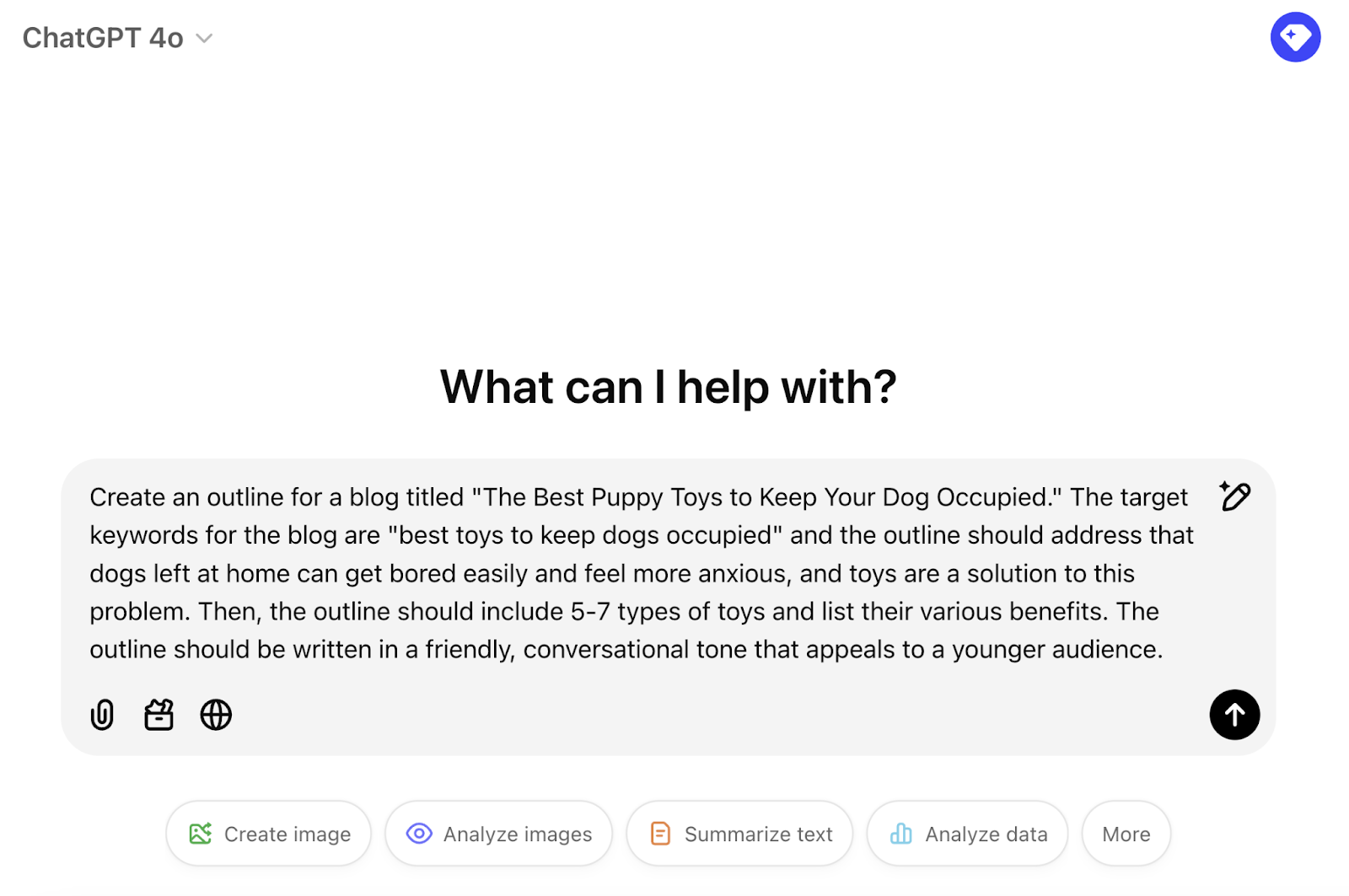
You’ll get a resulting text output that you can use in your brief.
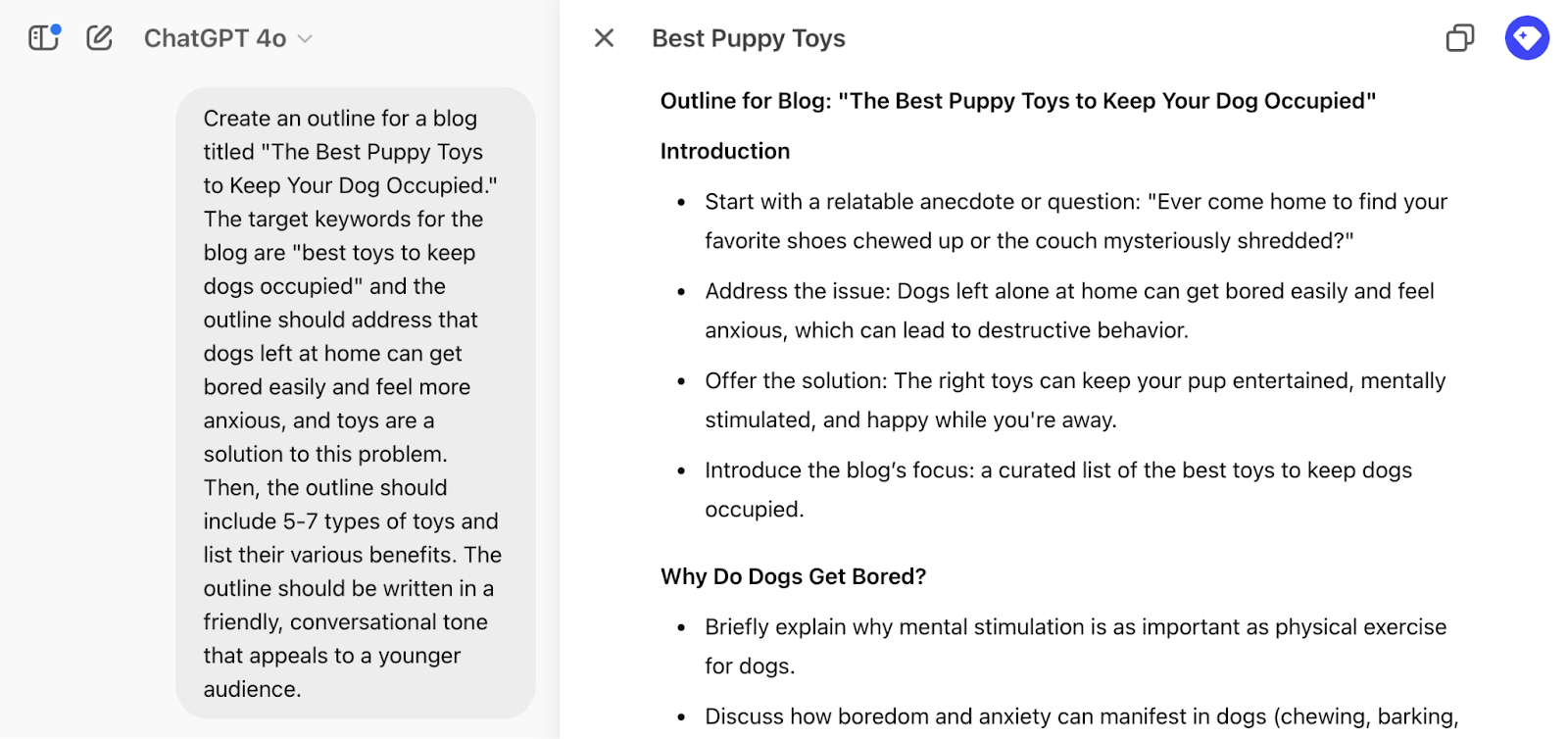
Review the output and make any necessary changes based on the keyword’s search intent, your audience, your brand voice, and your business goals.
Or, try Sermush’s SEO Content Template tool to further streamline brief creation.
Just enter your target keywords to get an outline complete with recommendations on word count, readability level, and more.
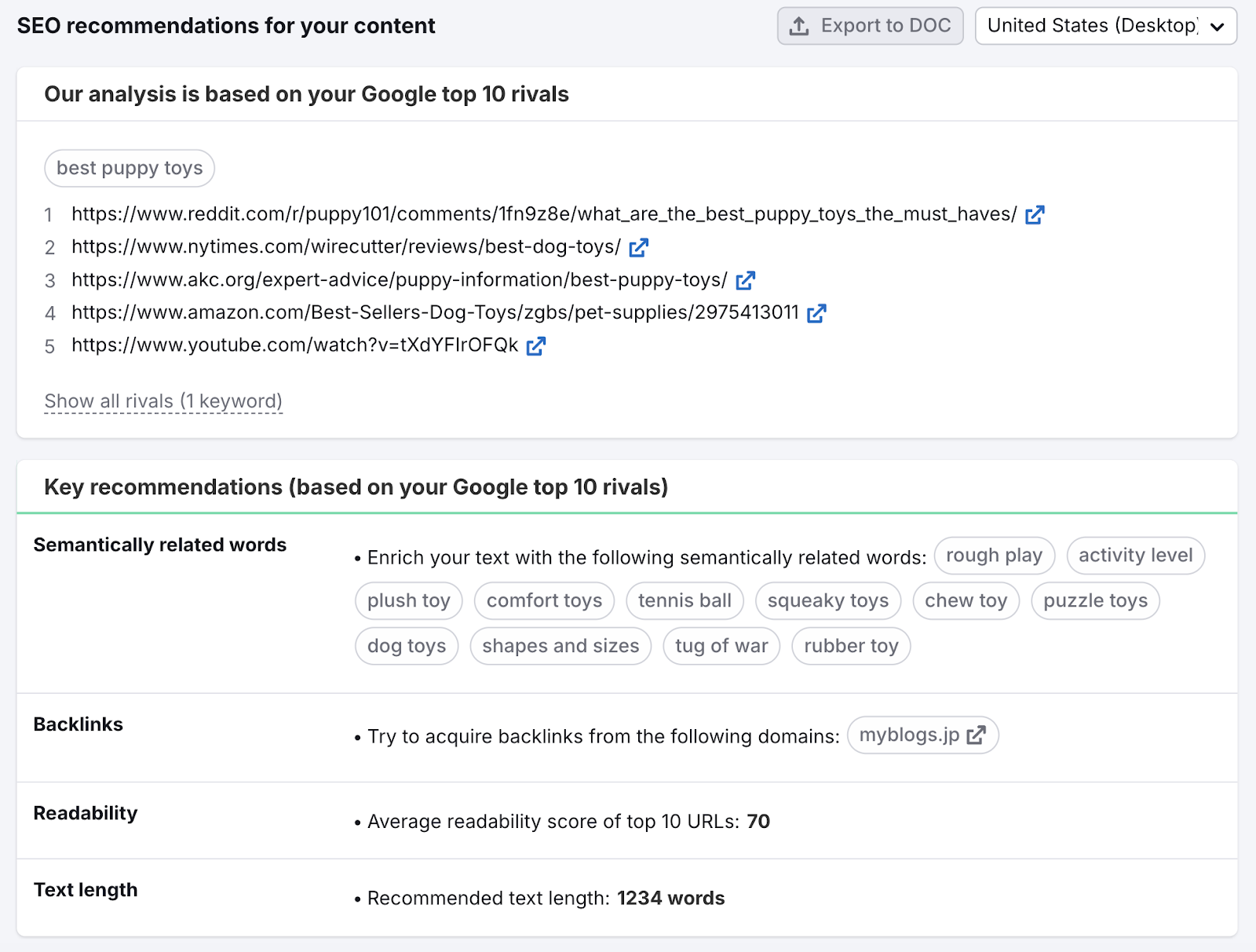
4. Cluster Keywords & Topics
Keyword clustering involves targeting a group of keywords with similar search intent on the same page, and you can do it much faster using AI than you ever could manually.
For example, you can cluster keywords using ChatGPT.
Make sure to mention “keyword clusters” in your prompt. And enter a list of keywords divided by commas.
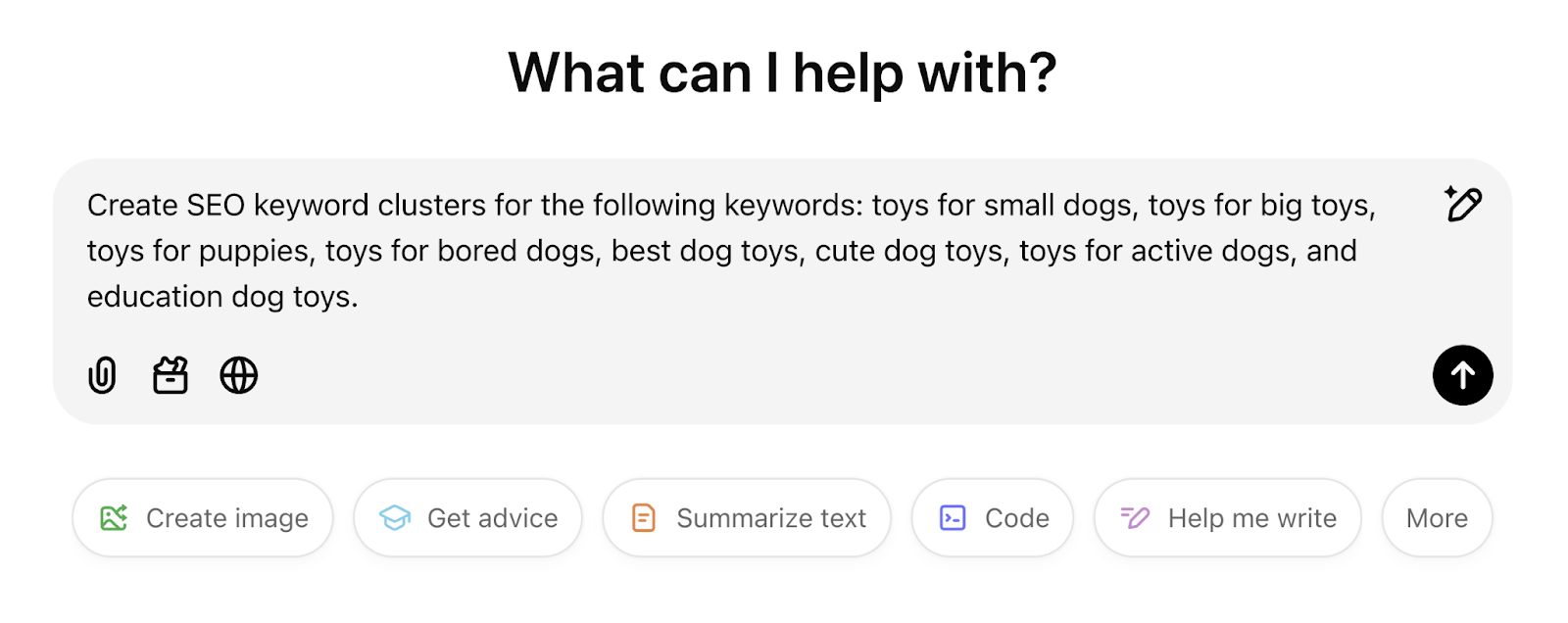
ChatGPT will cluster your keywords and give ideas for how to target each cluster in one piece of content.
Like this:
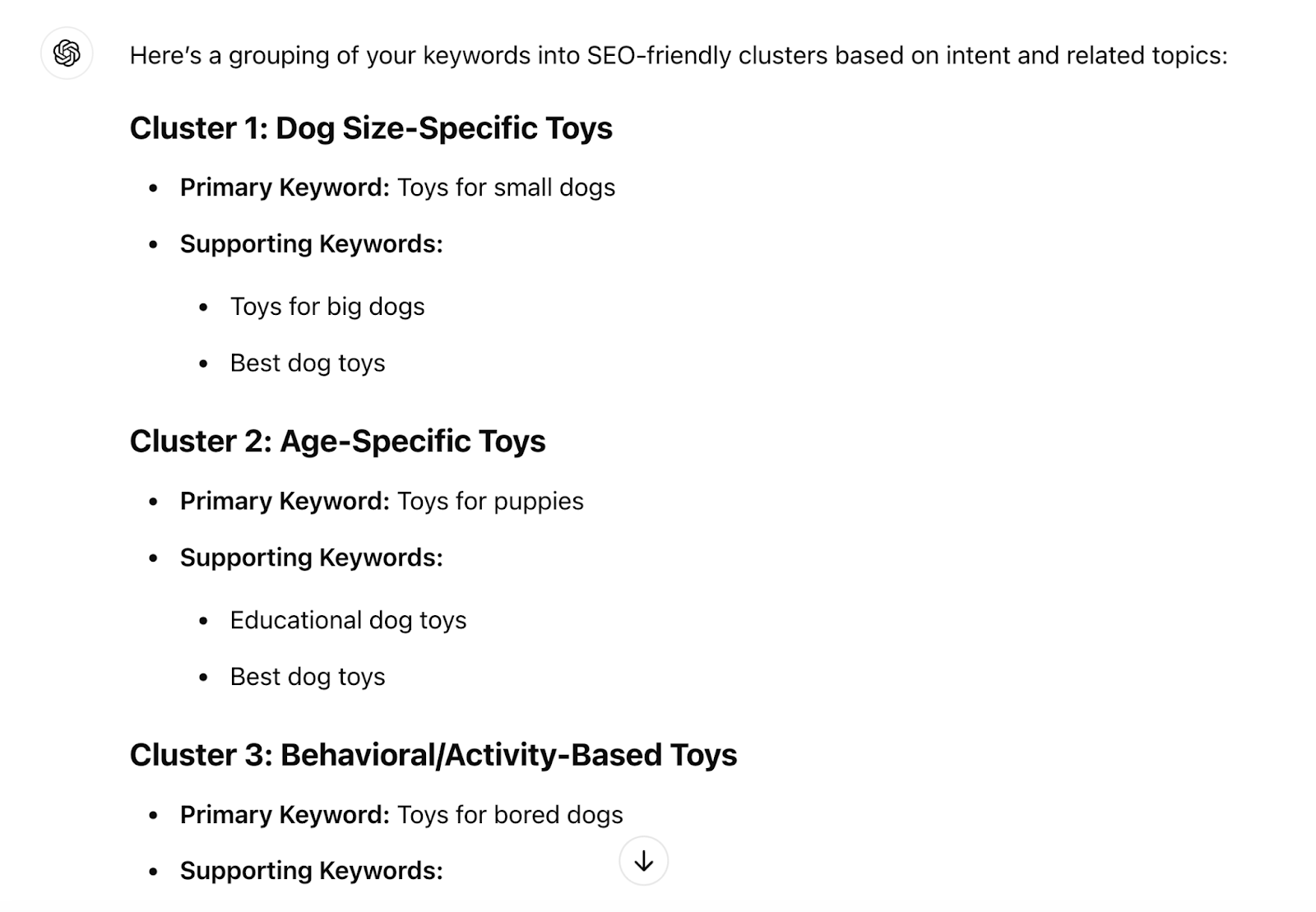
For more guidance on how to write prompts for SEO purposes, read our article on maximizing SEO impact with ChatGPT.
5. Optimize Content for Search Engines
AI tools can show you exactly what changes to make to your webpages to improve their performance in organic (unpaid) search, which is called on-page SEO.
And it includes optimizing the following:
- Title tag: A page title that may appear as a blue, clickable hyperlink in search engine results
- Meta description: A summary of a page’s content that may appear below the title in search results
- Headings: HTML elements that define headings and subheadings on a page
- Body content: The main content on a page like text, images, and videos
- URL: A uniform resource locator (URL) is the webpage’s address
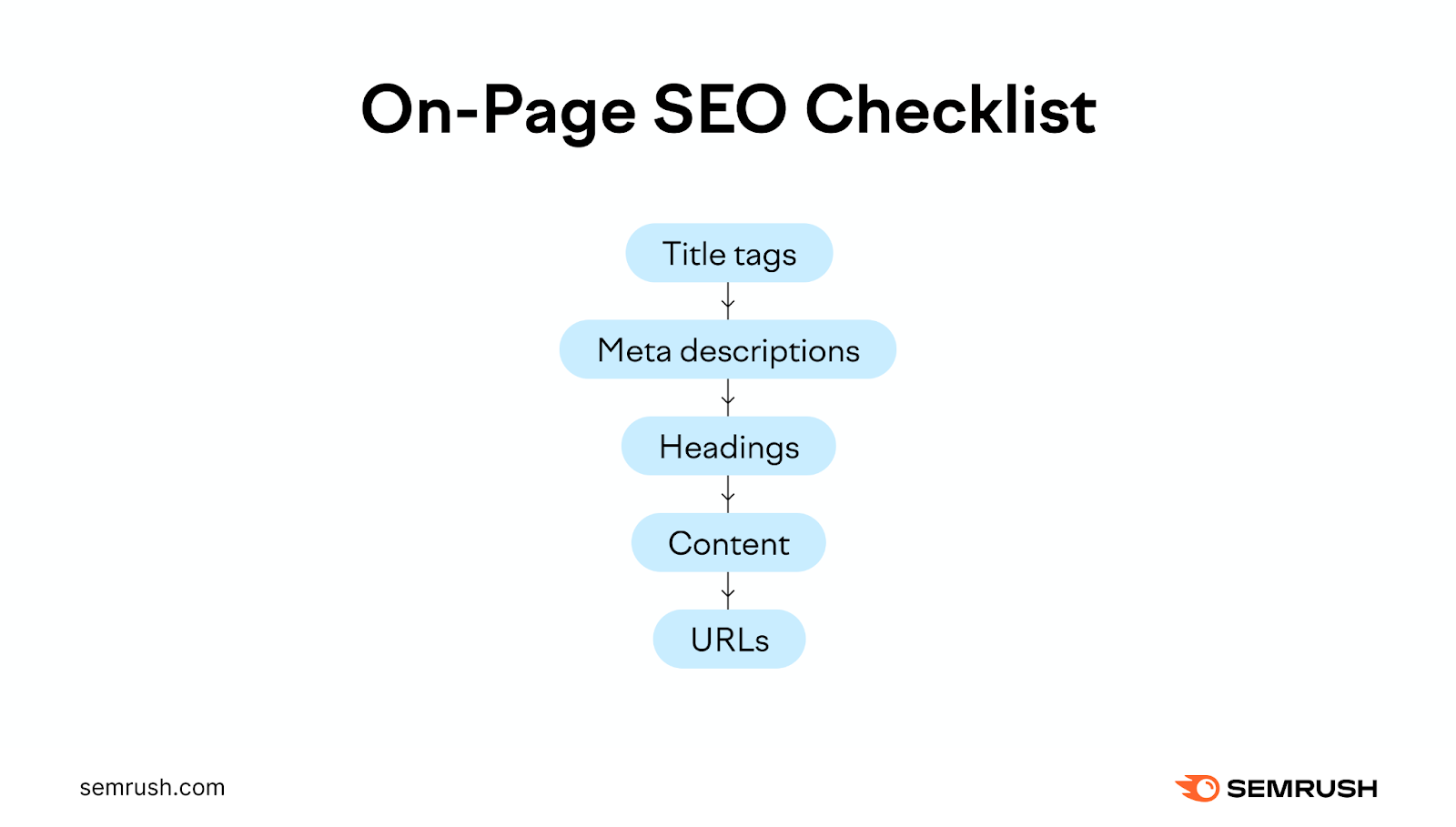
Use SEO Writing Assistant to confirm that your body content is optimized for ranking before publishing it.
The tool will check your content for:
- Tone of voice: How casual or formal your tone is and whether it’s consistent
- Readability: How difficult it is to read your text
- Target keywords: How well you include the terms you want to rank for in organic search
- Recommended keywords: Subtopics that are related to your target keywords
- Originality: How unique your text is
It also grades your content on a scale out of 10.
You can improve your score by following the suggestions in the right-hand sidebar.
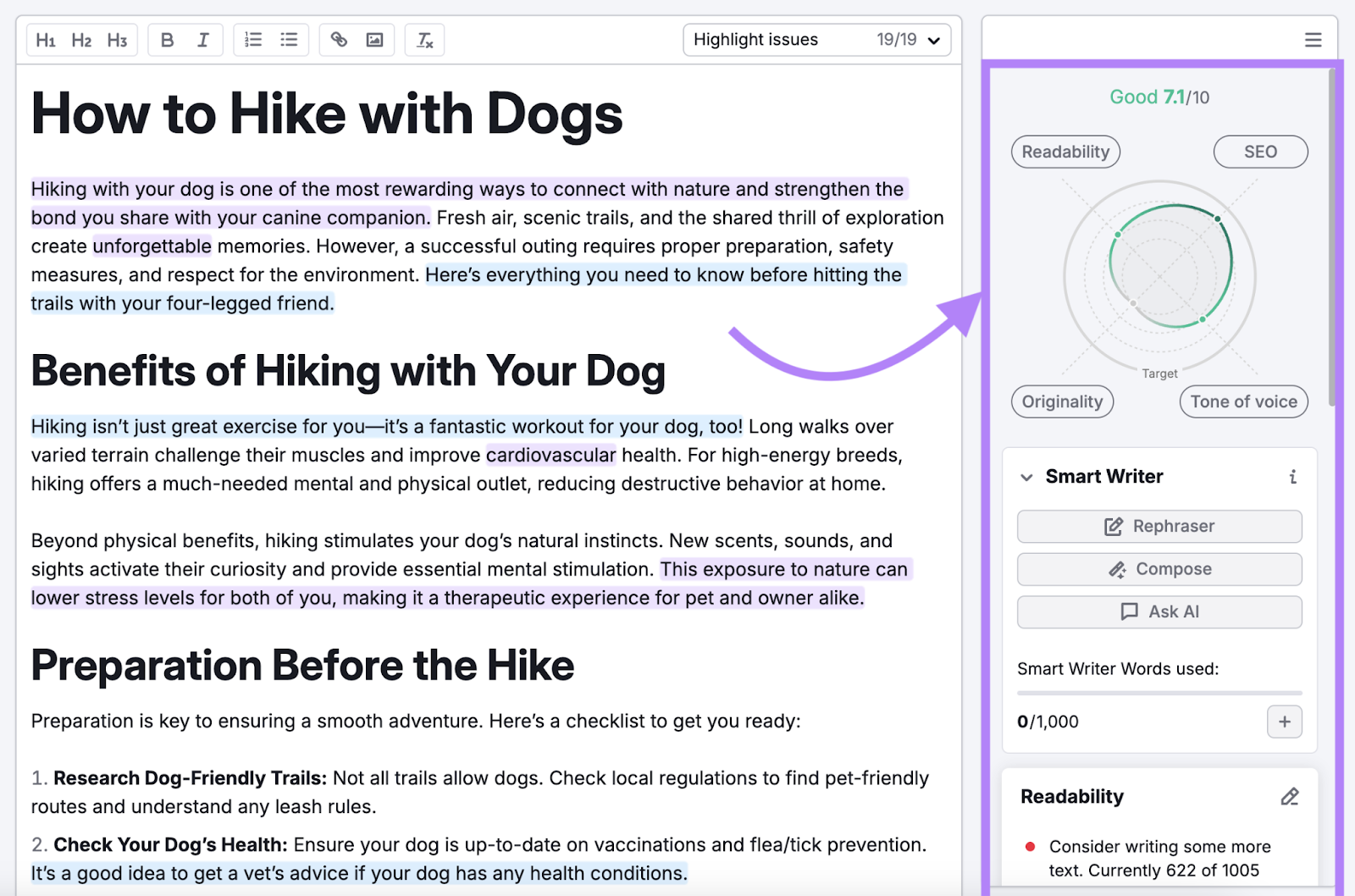
You can also use the Smart Writer features to speed up the writing process.
For example, the rephraser tool lets you enter text to rephrase, simplify, expand, or summarize.
After you generate text, click “Paste and close” to add it to your content.
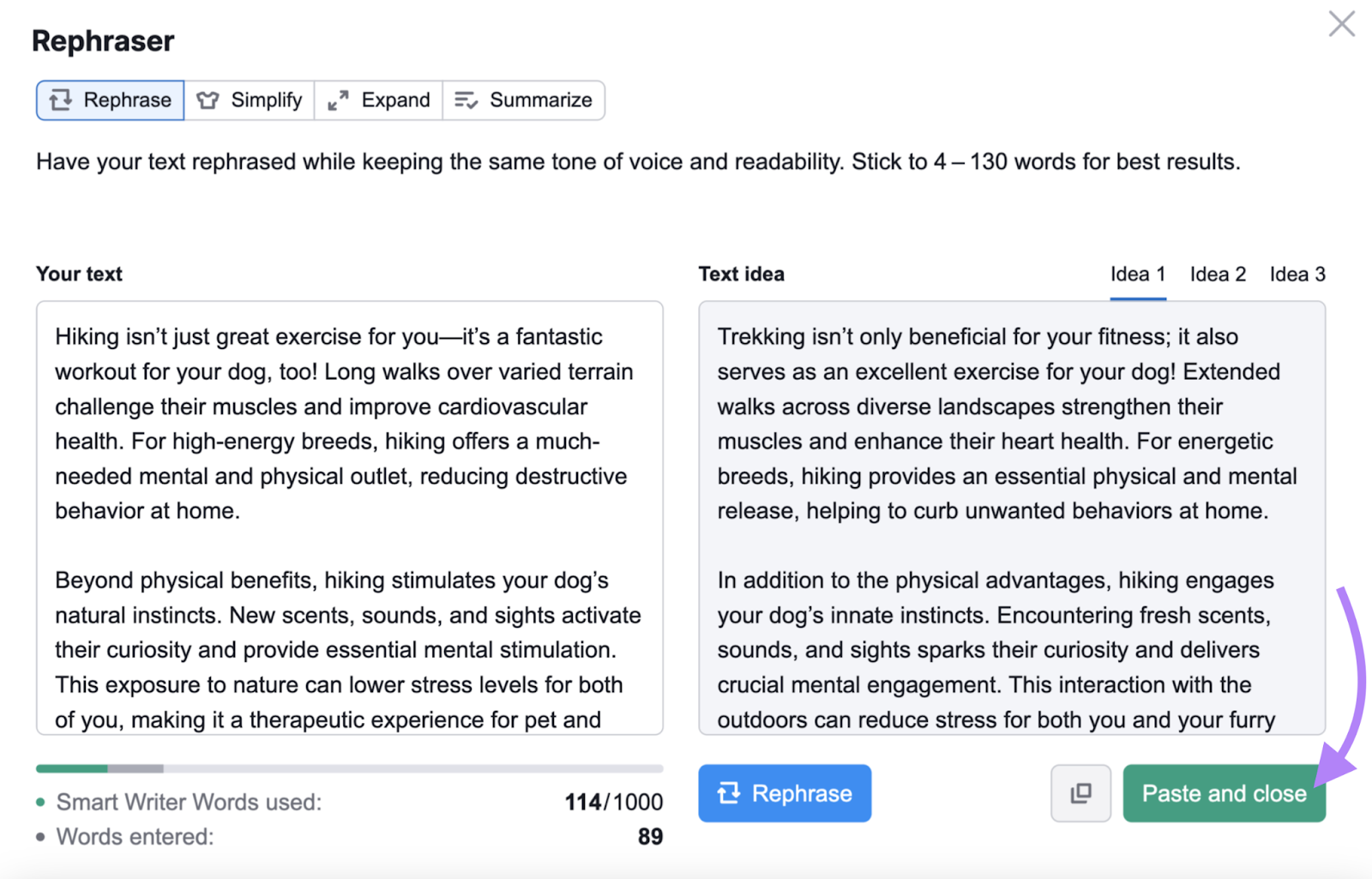
6. Maintain a Consistent Brand Voice
Your brand voice can impact how your audience feels about your business, and you can use AI to define, improve, and keep yours consistent.
To define your brand voice, you’ll want to:
- Research your audience to learn about their challenges or preferences and how your brand can meet them
- Document your company’s background and mission like your purpose and unique value proposition (UVP)
- Define your brand personality by choosing three to four words to describe your business (e.g., casual, innovative, warm, and informative)
You can then enter that into ChatGPT as part of a prompt when you ask it to create content.
Or use ContentShake AI to speed things up.
Select the “Brand Voice” tab. Then, click “+ Create Brand Voice.”
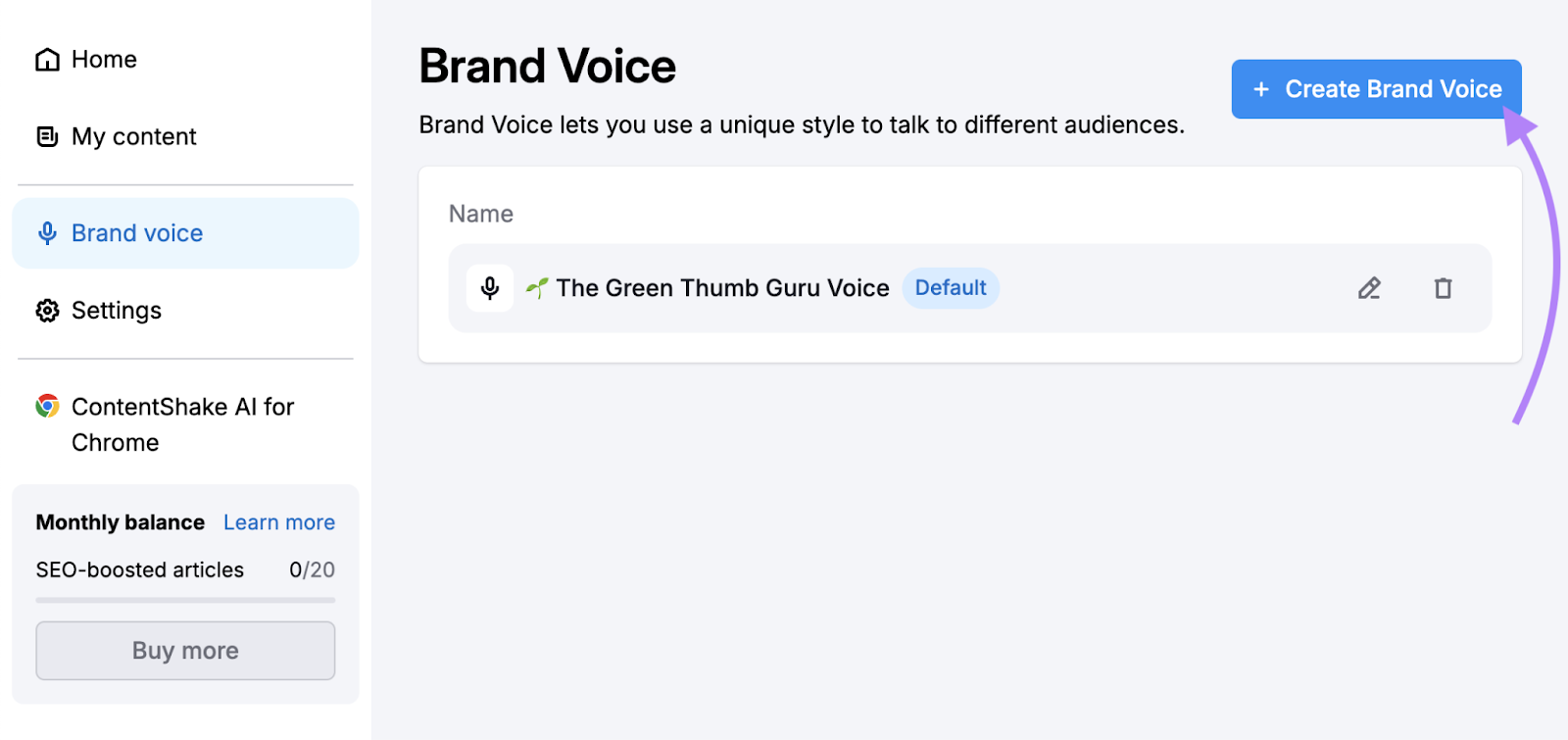
Copy and paste some content from your website into the tool (ideally, choose copy that you think best represents your brand).
Once submitted, the tool will use that content to define and summarize your brand voice.
Like this:
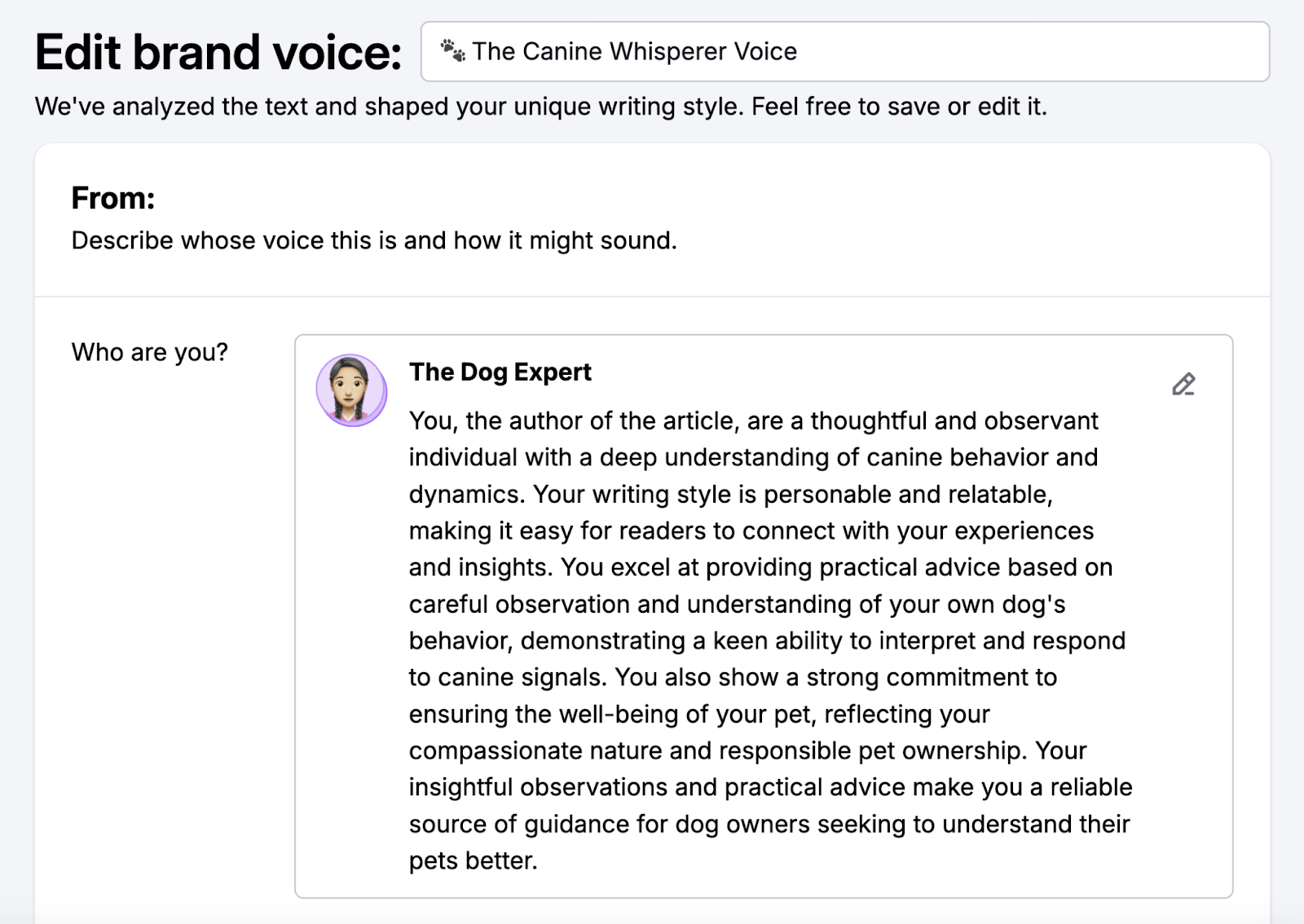
You can add this brand voice description to your style guide. So you (and any writers you work with) can create content that sounds like your business.
And if you generate content in ContentShake AI, it will adjust the text to fit your brand voice.
7. Repurpose Content
AI tools can help you quickly repurpose content, so you can get more from each piece and reach a wider audience.
For example, AI Social Content Generator lets you generate social posts from the content that’s already on your website.
Once you’re in the tool, select “Social Media” and choose the type of post you want to create.

On the next screen, choose the “Blog to Post” option from the drop-down at the top and enter your article’s URL.
(Not every post type includes the “Blog to Post” option. You may need to select “Text to Post” instead and briefly summarize your content in the field provided.)
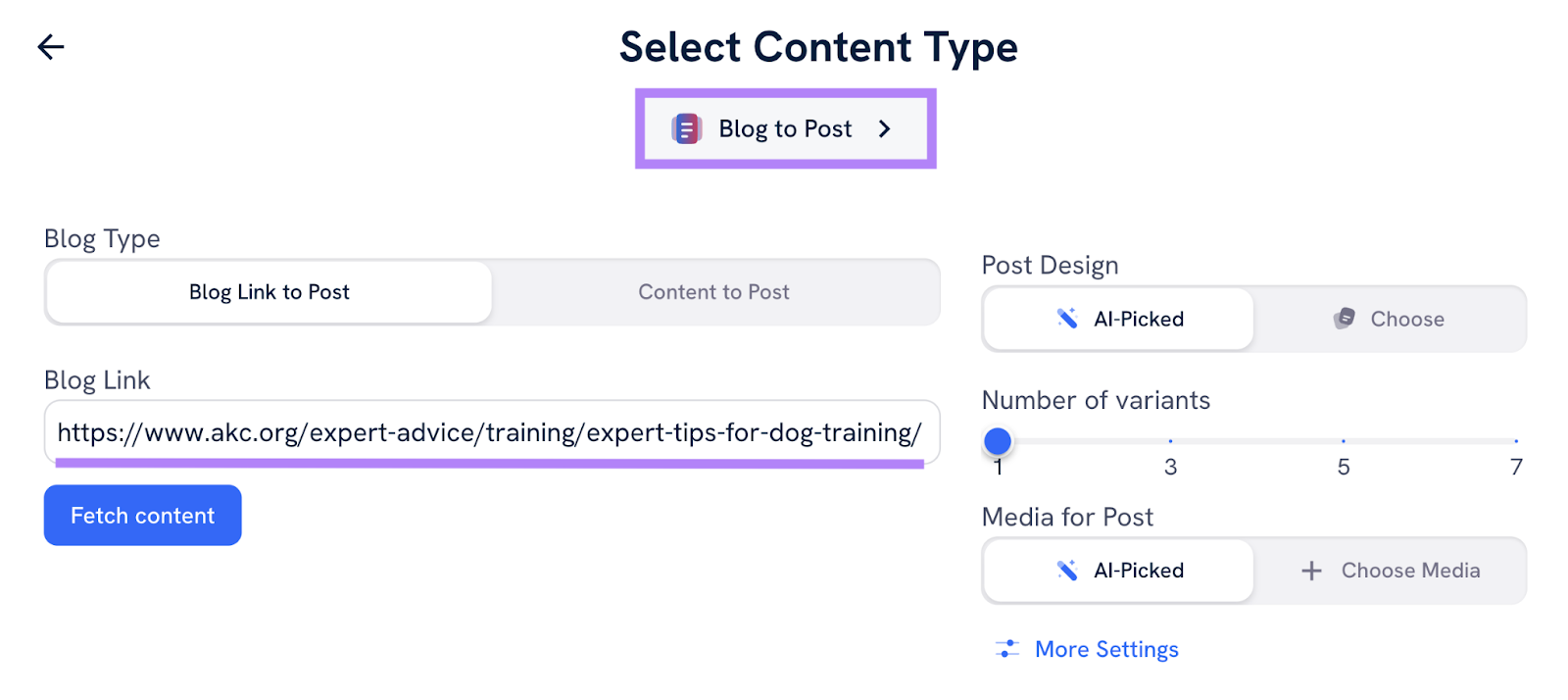
Make any adjustments, then let the tool create your post.
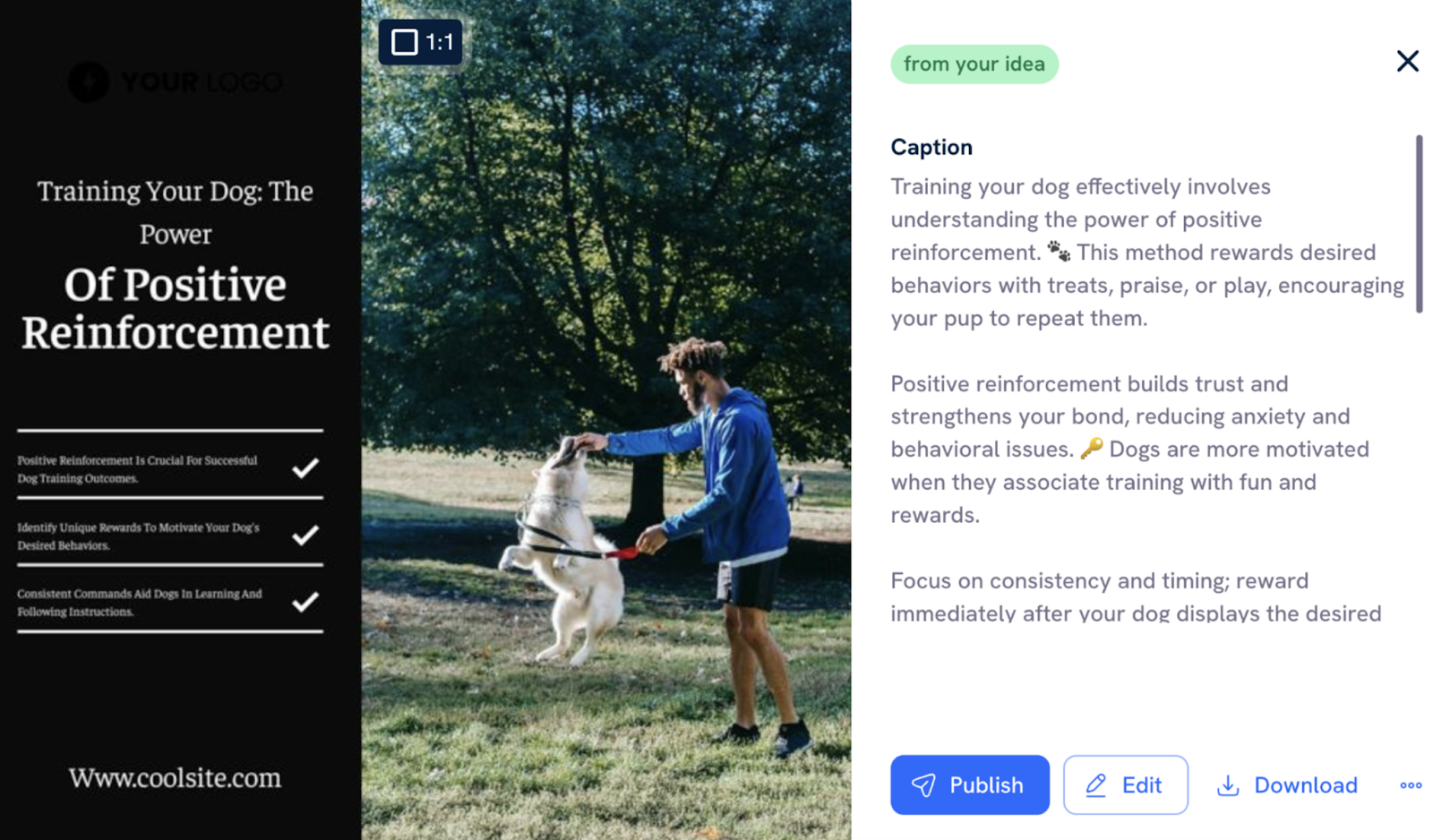
If needed, edit the AI-generated posts to better fit your brand voice or audience preferences. Then, publish them to your social media accounts.
8. Generate Content at Scale
AI tools let you create more content faster to help you scale your content efforts and possibly grow your brand awareness.
Specifically, scaling your content production helps with:
- Covering more topics on your website to increase your topical authority (your expertise)—and possibly your organic traffic
- Appealing to a greater number of audience segments
- Having more content to promote across channels (e.g., blog posts, videos, and podcast episodes)
Using a tool like ContentShake AI can help you generate content at scale.
For example, you can quickly create SEO articles from scratch.
Just enter a topic or keyword and click “Generate article.”
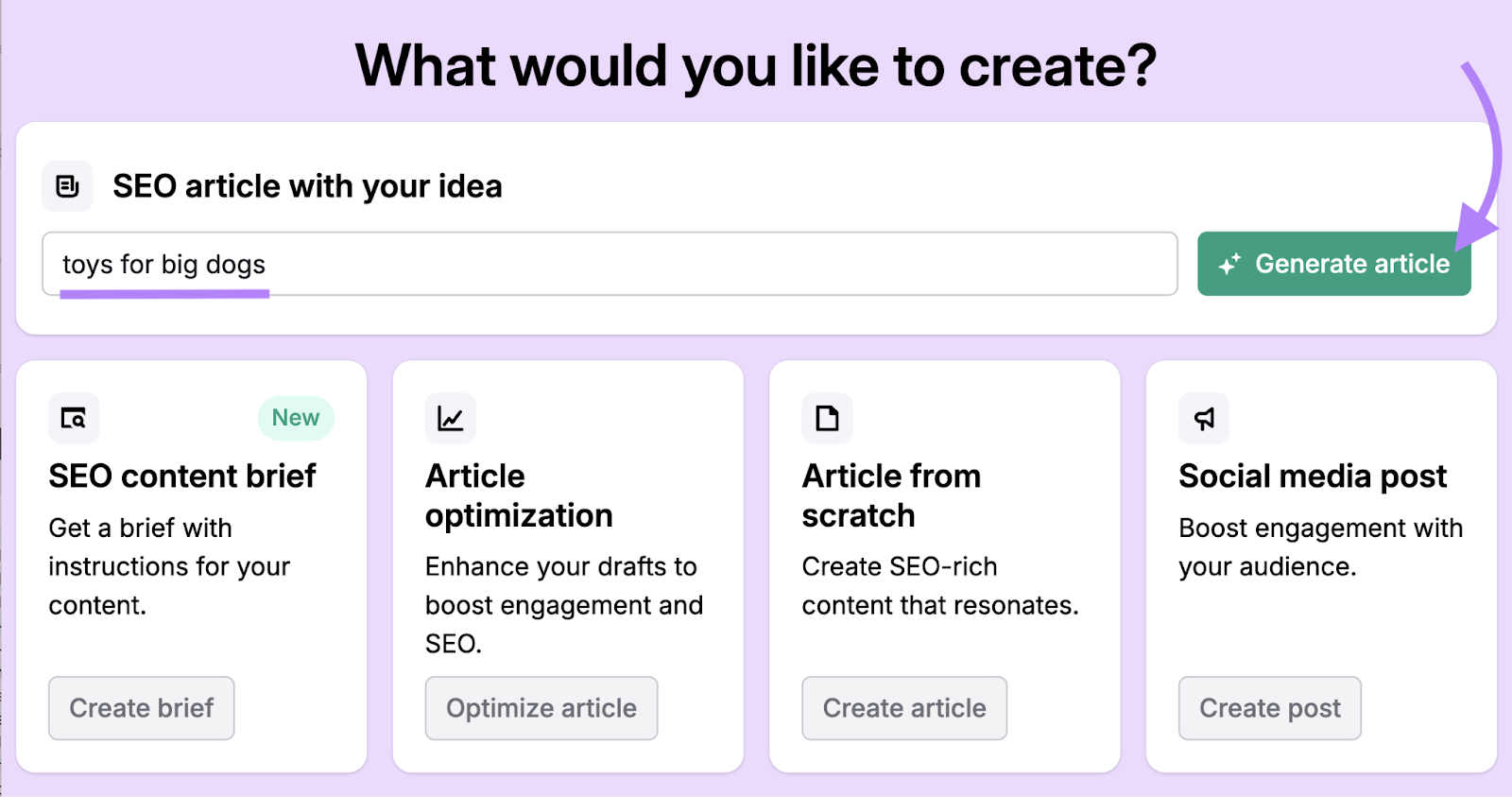
Fill out the information on the next screen. And if you’ve already created a brand voice in the tool, select it from the drop-down.
Then, click, “Create article.”
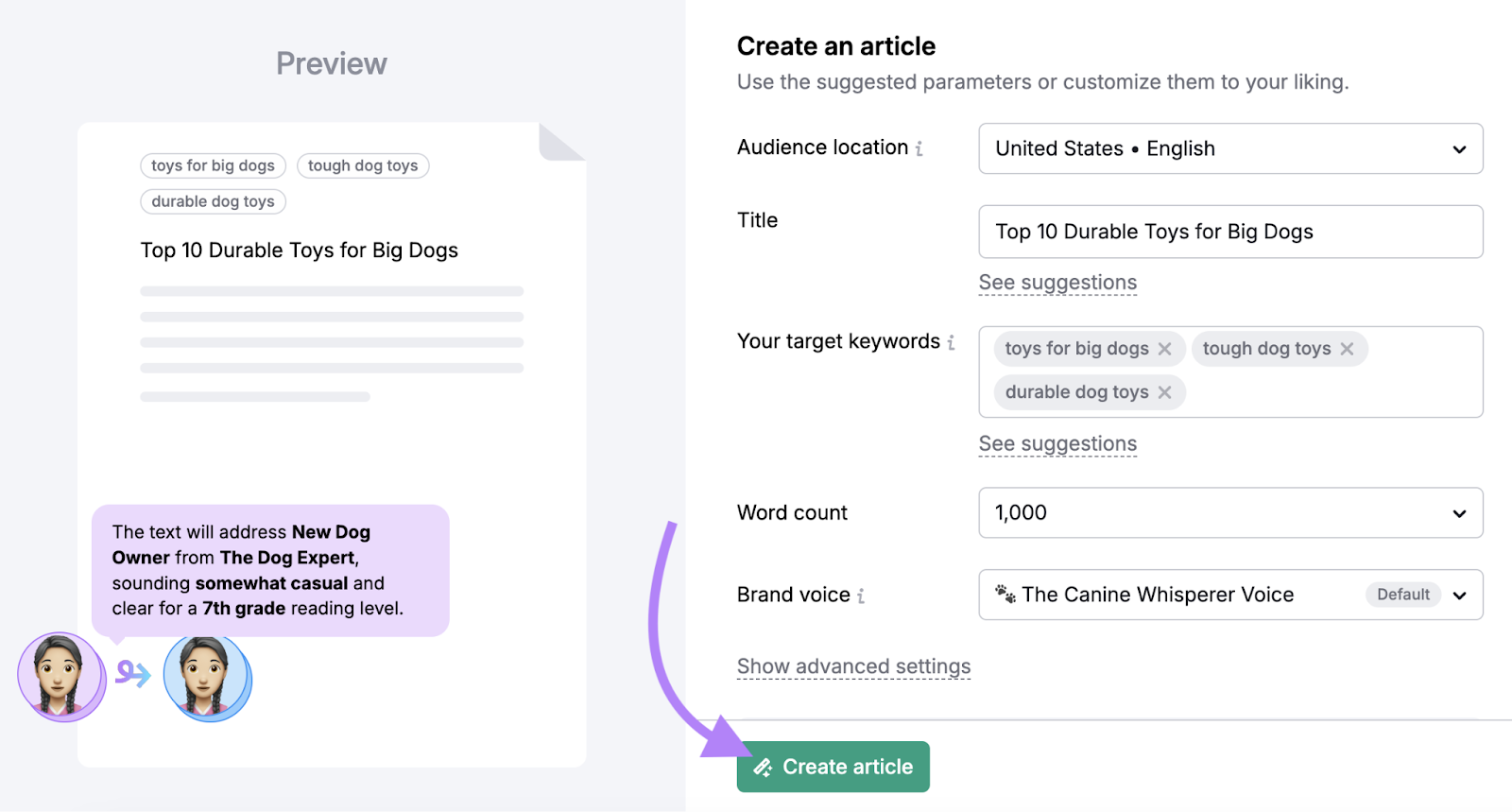
Starting your articles from a working draft (rather than a blank page) can save you significant time. So you can publish more content that your audience is interested in.
Leverage AI Tools in Your Content Strategy
Use the above tactics in creating and launching your content strategy to see how AI can benefit you.
Fortunately, some of the tools listed in this article have free versions or trials you can use to try them out.
For example, the Keyword Magic Tool and SEO Content Template are available with a free Semrush account. Create one to get started.